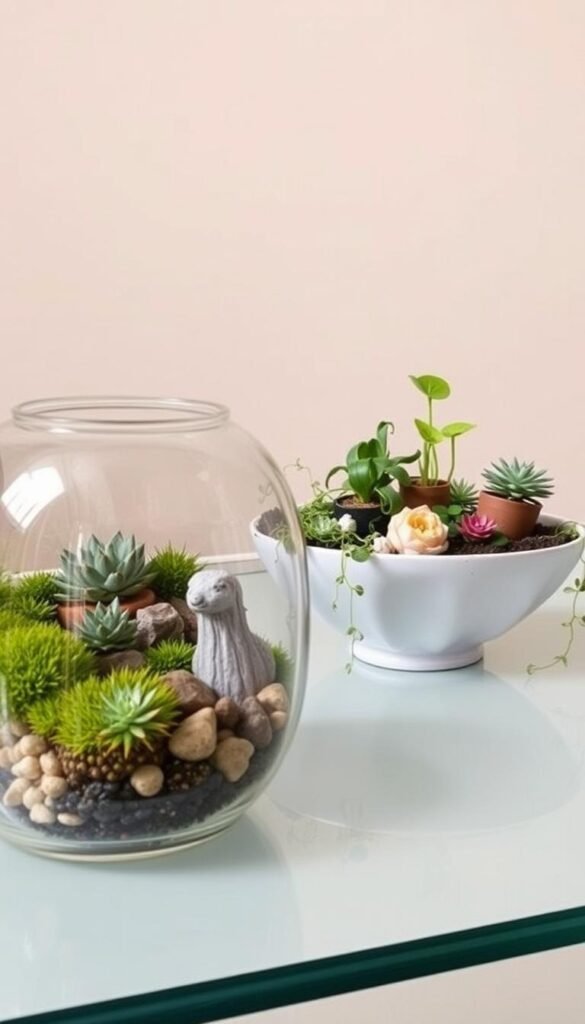Bringing nature indoors doesn’t require a green thumb or endless hours of care. Small-space gardening offers creative ways to nurture plants in unique setups that thrive with minimal effort. Whether you’re drawn to lush greenery or drought-tolerant textures, two standout options let you craft a living display tailored to your lifestyle.
Enclosed glass setups create self-contained worlds for moisture-loving varieties like ferns. These ecosystems recycle water, making them ideal for forgetful waterers. On the other hand, open dishes filled with cacti and succulents add sculptural charm to sunny spots. Both styles work in tight spaces but cater to different plant personalities.
You’ll find that maintenance varies between these living arrangements. Glass containers often need less frequent attention, while dish displays may require occasional soil checks. The choice depends on your schedule and how hands-on you want to be with your garden.
This guide breaks down design flexibility, care routines, and space requirements. By the end, you’ll know exactly which option matches your home’s light conditions and your personal aesthetic—no guesswork needed.
Exploring the World of Mini Gardens
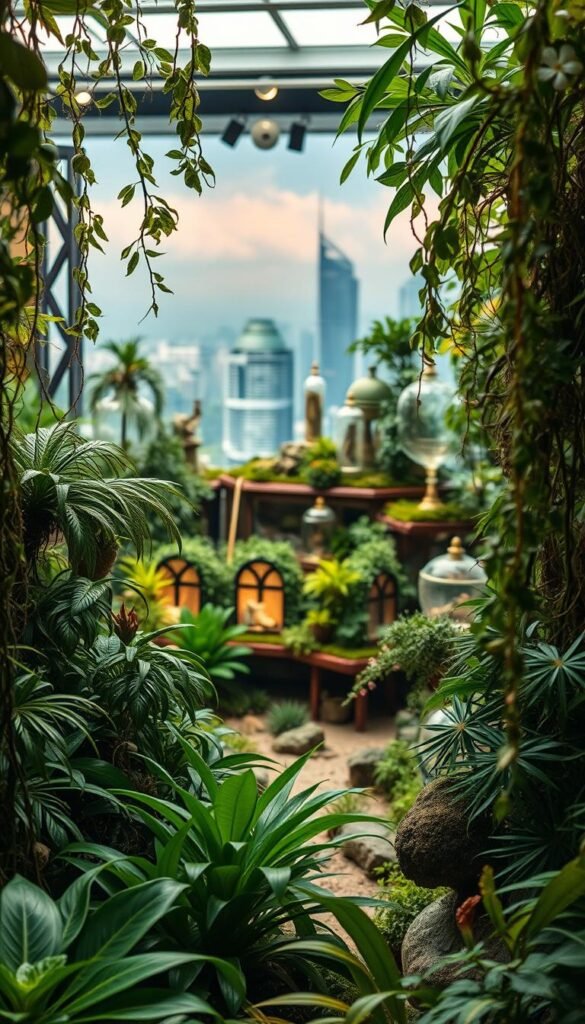
Long before modern urban living, people found clever ways to bring greenery into tight spaces. These living art forms blend science and creativity, offering a window into different cultures and climates. Let’s dig into their roots and see how they’ve shaped today’s popular designs.
Historical Inspirations and Traditions
In 1842, Dr. Nathaniel Bagshaw Ward made a surprising discovery. A fern sprouted in his sealed glass bottle and thrived for years without watering. This led to Victorian-era “Wardian cases” that protected delicate plants during ocean voyages.
Meanwhile, ancient Chinese artists crafted Penjing landscapes on shallow trays as early as 100 AD. Using rocks and tiny trees, they recreated majestic scenes you could display on a table. Fast-forward to mid-1900s Japan, where Saikei artists added flowing water effects to these miniature worlds.
Understanding Open vs. Closed Containers
Closed terrariums work like tiny greenhouses. Their sealed cover traps moisture, creating rainforest conditions for ferns and mosses. Open versions let air circulate, better suited for drought-loving succulents.
Dish gardens take this further—no lids, just artistic arrangements in wide containers. They’re perfect for mixing cacti with decorative stones. While closed systems need minimal care, open designs let you tweak layouts as plants grow.
Whether you prefer steamy jungles or desert vibes, these gardens turn small spaces into living stories. Now you know why your container choice matters more than you might think!
DIY Terrarium vs. Dish Garden: Which Mini Garden Style Fits You?
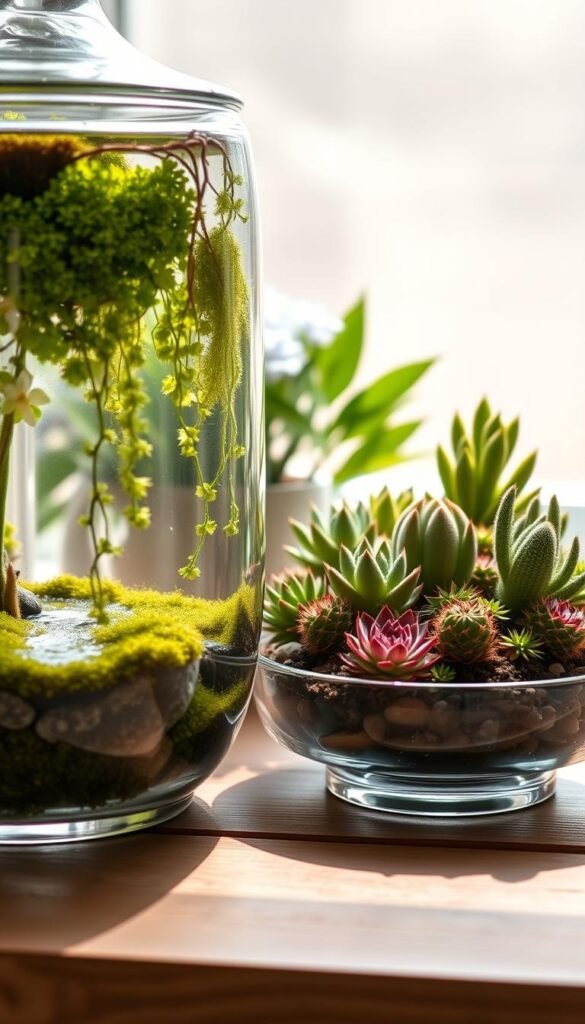
Choosing between a self-contained ecosystem and an open-air arrangement starts with understanding their core needs. Let’s explore how light, water, and space impact your success with these living displays.
Assessing Light, Water, and Space Needs
Closed systems recycle moisture, needing water only twice a year. Open designs and dish setups require weekly checks, especially if they include thirsty tropicals. Bright, indirect light keeps both styles healthy—direct sun scorches leaves in glass containers and dries out succulents too quickly.
Drainage matters most for dish gardens. Without proper airflow, roots rot. Terrariums avoid this issue through layered gravel and activated charcoal. When planning space, remember that compact glass vessels fit narrow shelves, while wider dishes need room to showcase right container size for each plant’s growth.
Comparing Benefits and Challenges
Tropical plants like ferns thrive in humid terrariums, while cacti prefer dish gardens’ dry conditions. Closed setups demand less care but limit redesign options. Open styles let you rearrange freely but need regular pruning.
| Feature | Closed Terrarium | Dish Garden |
|---|---|---|
| Watering Frequency | Every 4-6 months | Weekly (non-desert) |
| Light Preference | Bright indirect | Bright indirect |
| Best For | Busy schedules | Creative tinkerers |
Long-term, terrarium plants stay small with occasional trimming. Dish gardens may require repotting fast-growing succulents. Both styles bring nature indoors—your choice depends on how much interaction you want.
Creating Your Mini Garden: Step-by-Step Guide
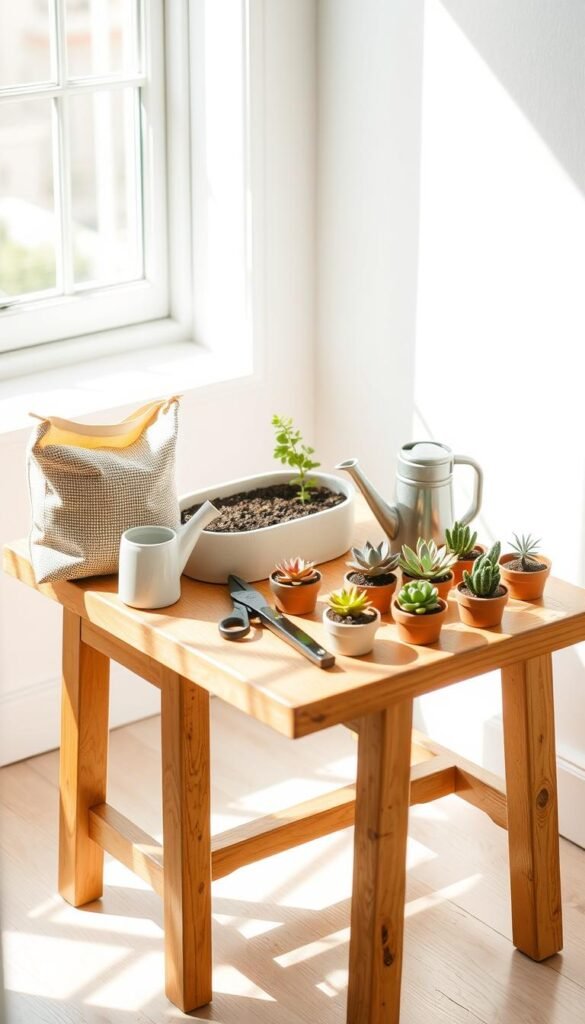
Crafting a thriving mini garden begins with the right foundation. Let’s walk through the essentials for building a healthy environment your plants will love.
Gathering Materials and Preparing Your Container
Start by selecting a clear container for enclosed setups or a shallow dish with drainage holes for open designs. Clean your vessel with mild soap to remove dust or residues. For terrariums, use a 2-inch gravel base at the bottom to prevent waterlogging.
Add a thin layer of activated charcoal over the stones—this keeps the soil fresh. Top it with sheet moss to separate drainage materials from your potting mix. Dish gardens without drainage need 1-2 inches of pebbles instead.
| Material | Terrarium | Dish Garden |
|---|---|---|
| Base Layer | 2″ gravel/stones | 1-2″ pebbles |
| Charcoal | ¼-½” layer | 1″ layer |
| Soil Depth | 1″ potting mix | 2″ succulent mix |
Planting, Layering, and Design Tips
Arrange taller plants toward the back and compact varieties up front. Gently loosen roots before placing them in pre-dug holes. For container gardening basics, firm the soil around each plant without compacting it.
Finish with decorative stones or moss to hide bare spots. Mist enclosed setups lightly after planting—they’ll create their own humidity. Open designs need a thorough watering, then weekly checks once established.
Expert Care and Maintenance for Your Mini Garden
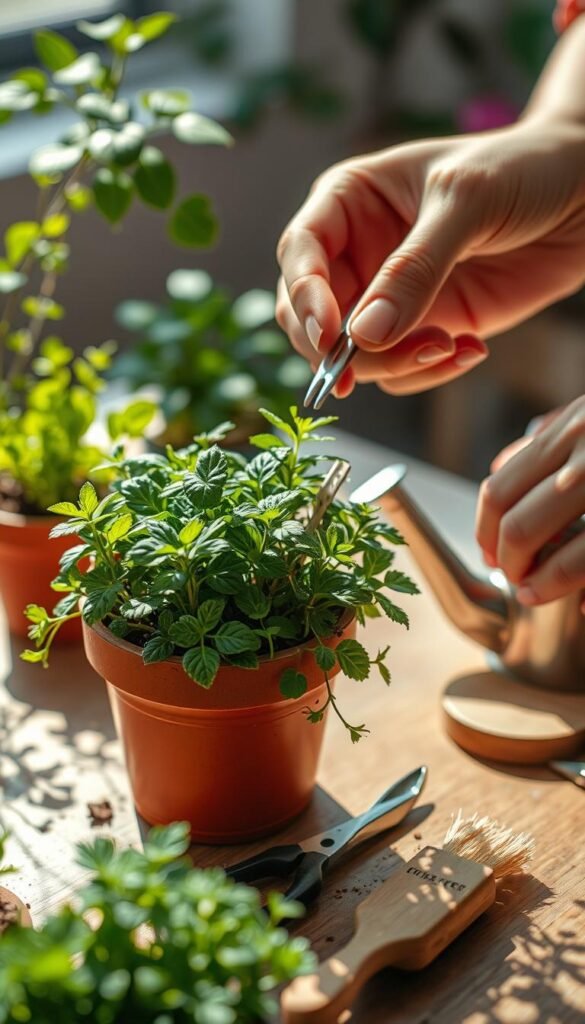
Keeping your living display thriving requires smart routines tailored to its unique needs. With the right approach, you’ll enjoy vibrant growth while avoiding common pitfalls. Let’s explore how to become a confident plant caretaker.
Watering, Lighting, and Pruning Essentials
Master your watering rhythm: mist open setups weekly when soil feels dry, and add a tablespoon of water to dish displays. Closed systems rarely need hydration—condensation on the glass means they’re self-watering. Always use room-temperature water to protect delicate roots.
Position containers in bright, indirect light. Rotate them monthly to prevent lopsided growth. If leaves yellow or stretch, adjust their spot. Closed glass setups can overheat near windows—keep them 3 feet from direct sun.
- Trim overgrown stems by pinching tips—this encourages bushier foliage
- Remove dead material promptly to prevent mold
- Wipe glass monthly for better light penetration
Avoid fertilizers in sealed environments—they cause leggy growth. For open designs, use diluted cactus food yearly. Refresh moss layers every 12-18 months to maintain humidity balance.
Watch for soggy soil—it signals poor drainage. Add perlite to dish gardens or charcoal to terrariums if moisture lingers. With these simple habits, your miniature ecosystem will flourish for years.
Final Touches for Your Mini Garden Journey
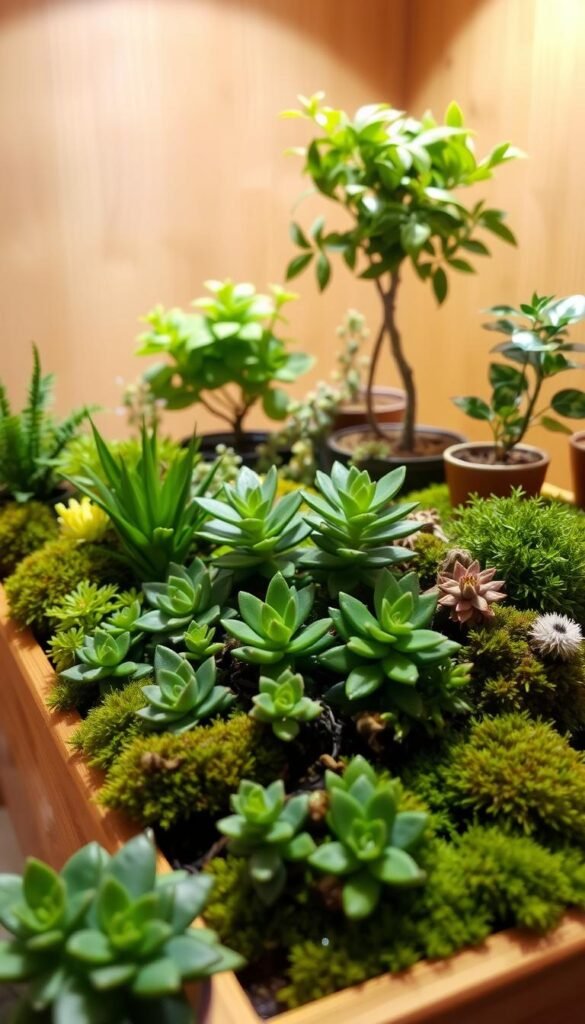
Your living masterpiece deserves the perfect stage. Glass containers shine as dining table centerpieces, while shallow pots of cacti add warmth to empty corners. These compact ecosystems make thoughtful gifts—personalize them with colored stones or tiny figurines for birthdays or housewarmings.
When arranging plants, keep root depth in mind. Succulents thrive in 3-inch dishes, but always include drainage holes. If growth gets unruly, trim stems or swap specimens seasonally. Theme your creations with desert rocks or tropical moss for year-round visual interest.
Track progress through photos or notes. Did that fern wilt after two weeks? Maybe it needs more moisture. Celebrate victories like new shoots or successful propagation. With time, you’ll develop an eye for balancing colors and textures in your space.
Remember—every adjustment teaches something new. Whether expanding collections or troubleshooting issues, your green thumb grows with each tiny triumph. Now go showcase that living art!

